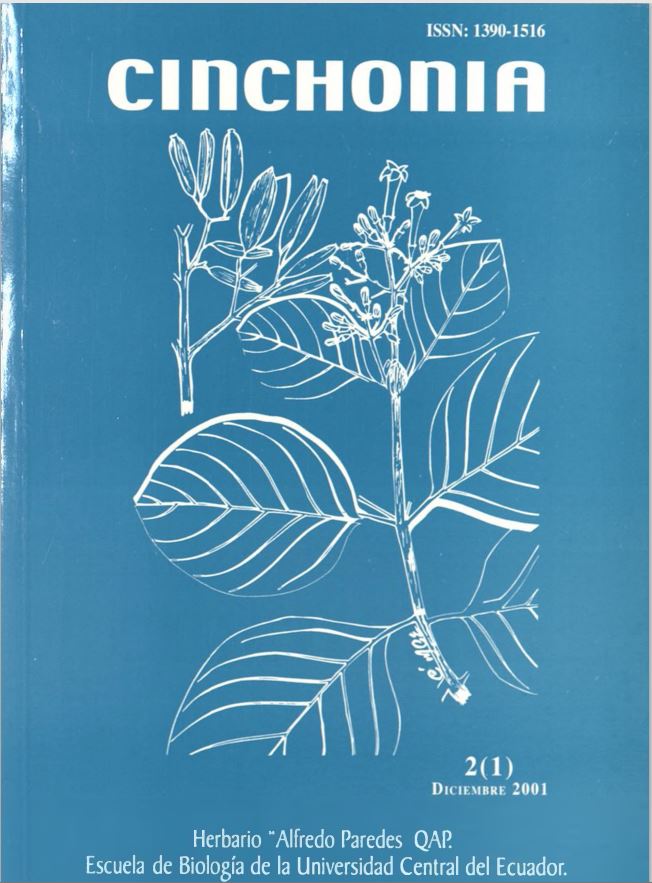DIVERSIDAD Y COMPOSICIÓN FLORÍSTICA EN DOS BOSQUES NUBOSOS DEL OCCIDENTE DE PICHINCHA.
Main Article Content
Abstract
The study site is located in the western portion of the Ecuadorean province of Pichincha. Cantón Quito, in forest types of Lower Montane Evergreen Forest and Lower Montane Moist Forest. The watershed of the Cambugan River corresponds to the Parroquia San José de Minas, ca 78*3VW00*11'N and at elevations of 1,600-2.530 m. The watershed of the Pachijal River corresponds to the Parroquia Nanegalito, Caserío las Tolas, ca. 78*43'W-00C03'N and at elevations of 1,330-1,700 m. 5 Cerón: Diversidad. Composición. Sunmos Field work was carried out during 1998-1999 in Cambugan and during 1999-2000 in Pachijal. In both watersheds I sampled vegetation in five transects of 0.1 ha apiece, each transect composed of five subtransects measuring 50 x 4 m and arranged radially. Transects were placed along an altitudinal transect, from 1,670 m to 2,490 m in Cambugan and from 1,390 m to 1,700 m in Pachijal In each transect I collected, identified, measured the diameter, and estimated the height of all stems =2.5 cm dbh. Voucher specimens were deposited in the QAP Herbarium, under Cerón et al. numbers 37,000-38,000 (Cambugan) and 38,000- 40,000 (Pachijal). For the analyses I calculated indices of diversity and similarity, as well as the proportion of endemic species. The Cambugan transects contained 126-212 individual stems and 44-54 species, while the Pachijal transects had 145-206 individual stems and 60-70 species. The diversity index indicated low to moderate species richness in Cambugan and slightly higher species richness in Pachijal. Similarity between transects vaned in Cambugan between 6.8 and 50% of species shared, and in Pachijal 30.5-47.9% •hared In the two watersheds I recorded 32 endemic speoes (11.7% of the total). The most frequent species in a given transect was never the most frequent species in any other transect or in the other watershed, with the exception of Ossaea micrantha (Sw.) Macf. ex Cogn. (Melastomataceae) and Palicourea dcmissa Standi. (Rubtaceae).

